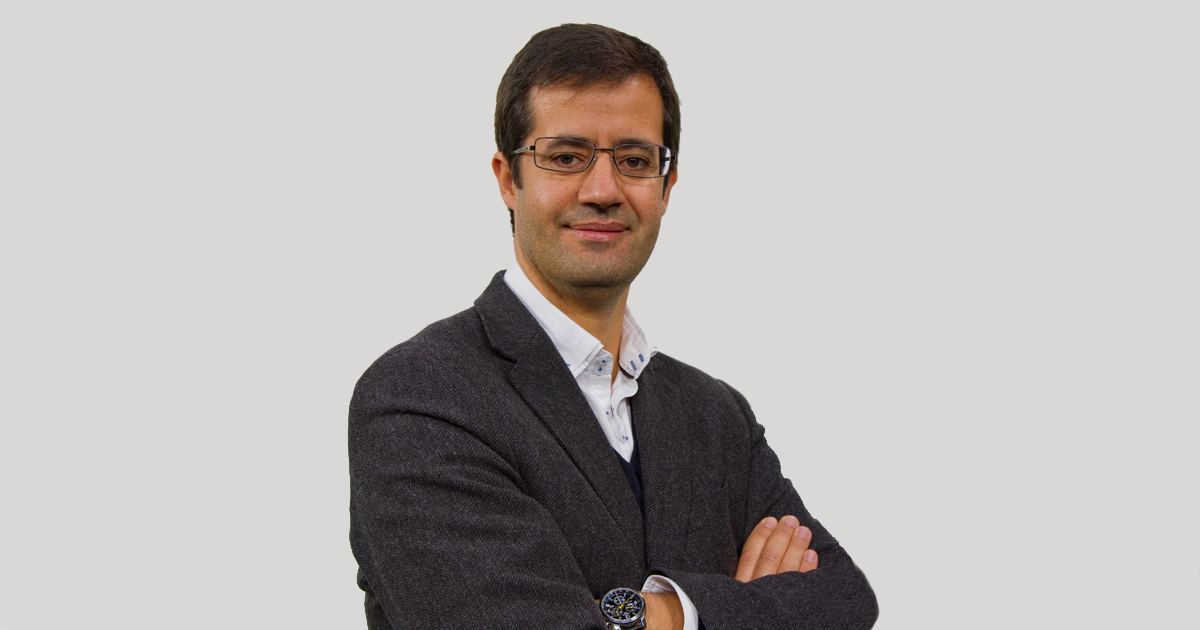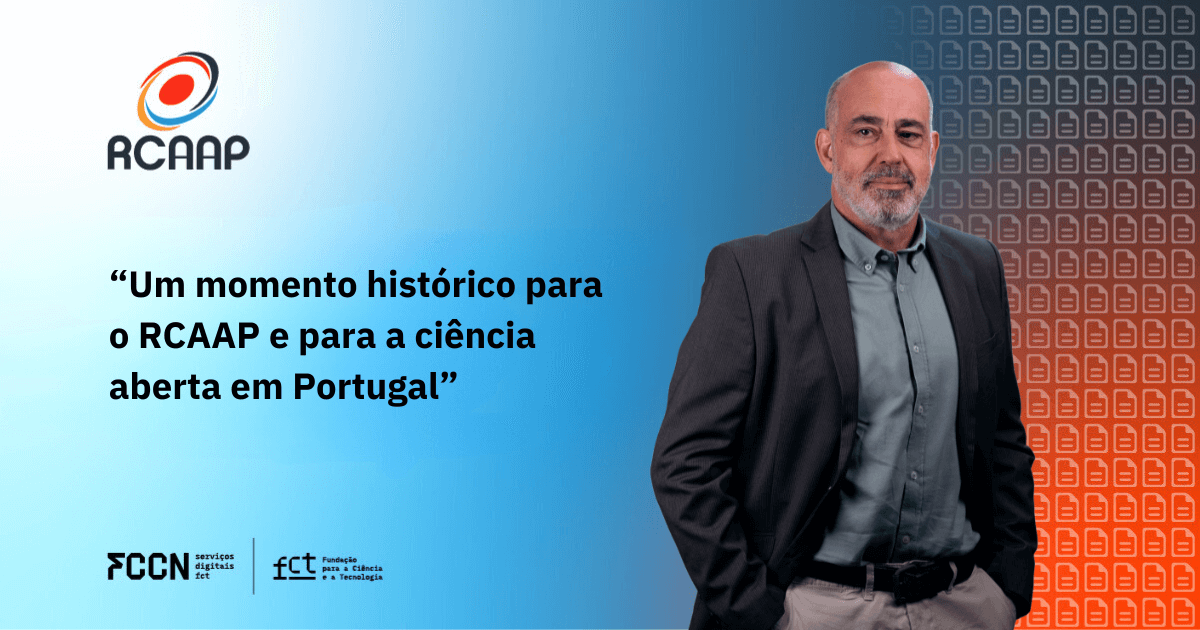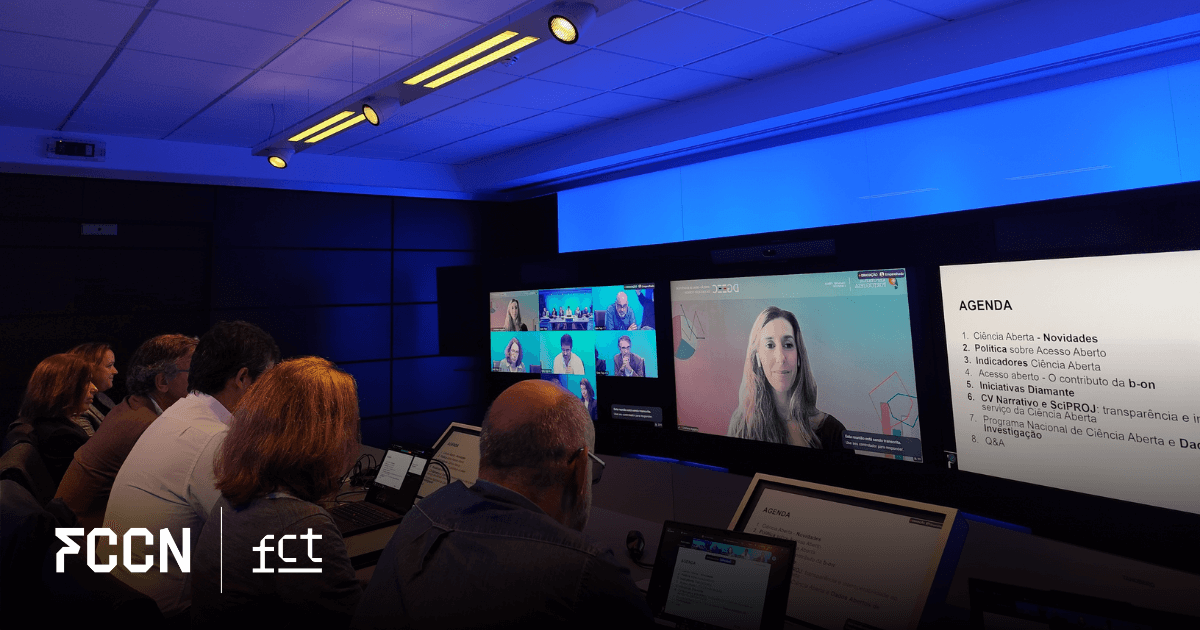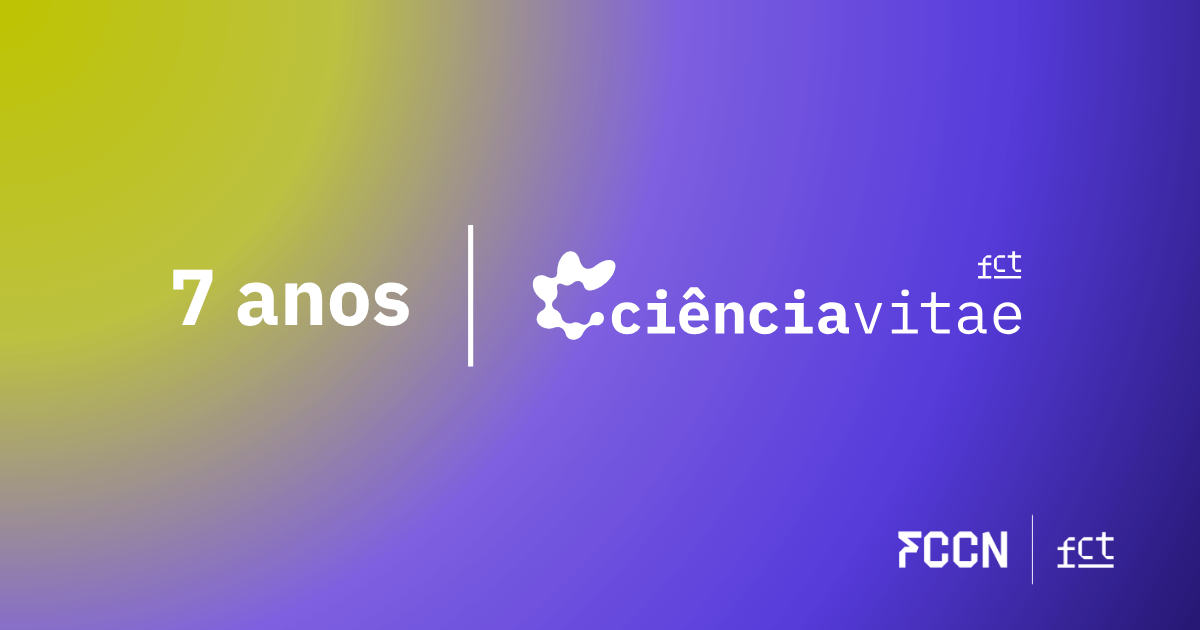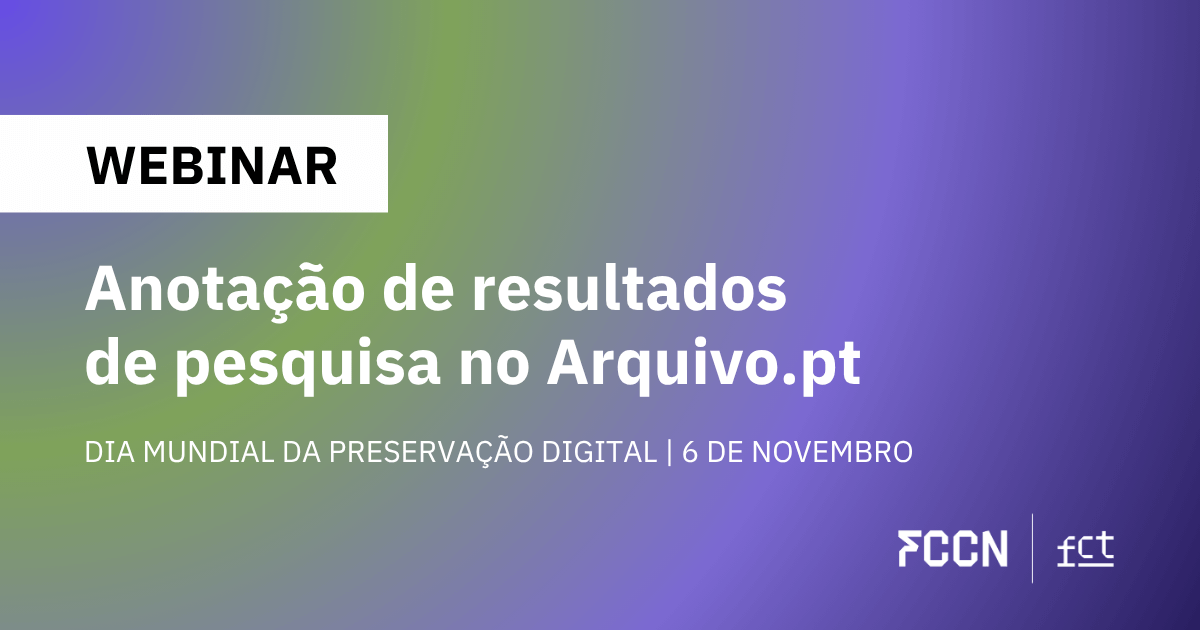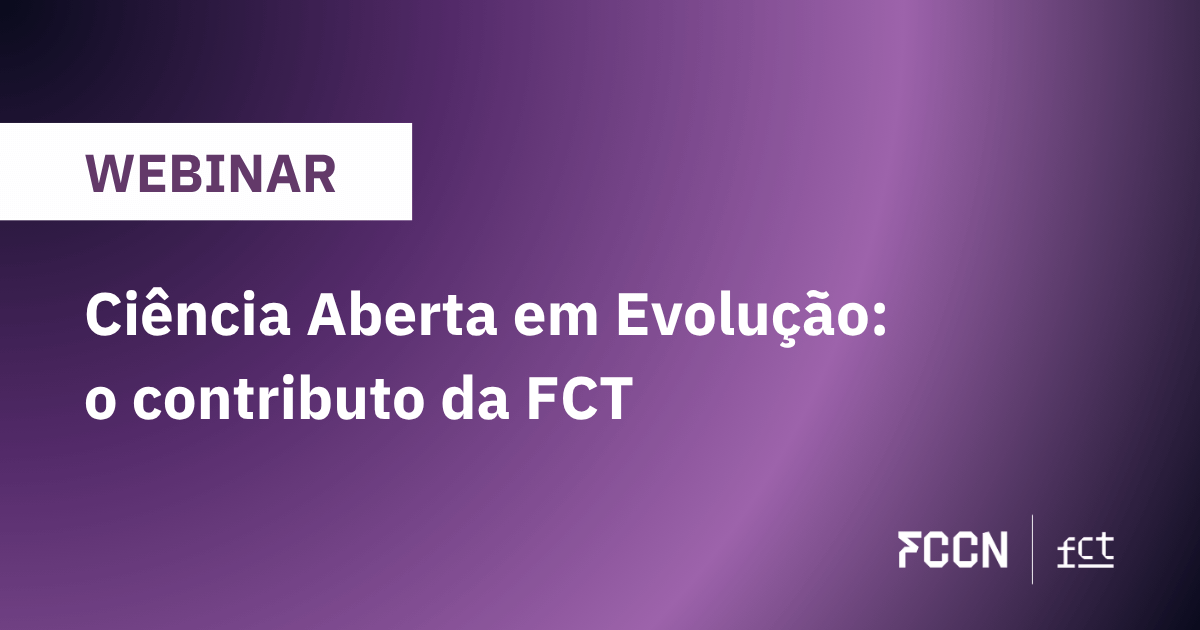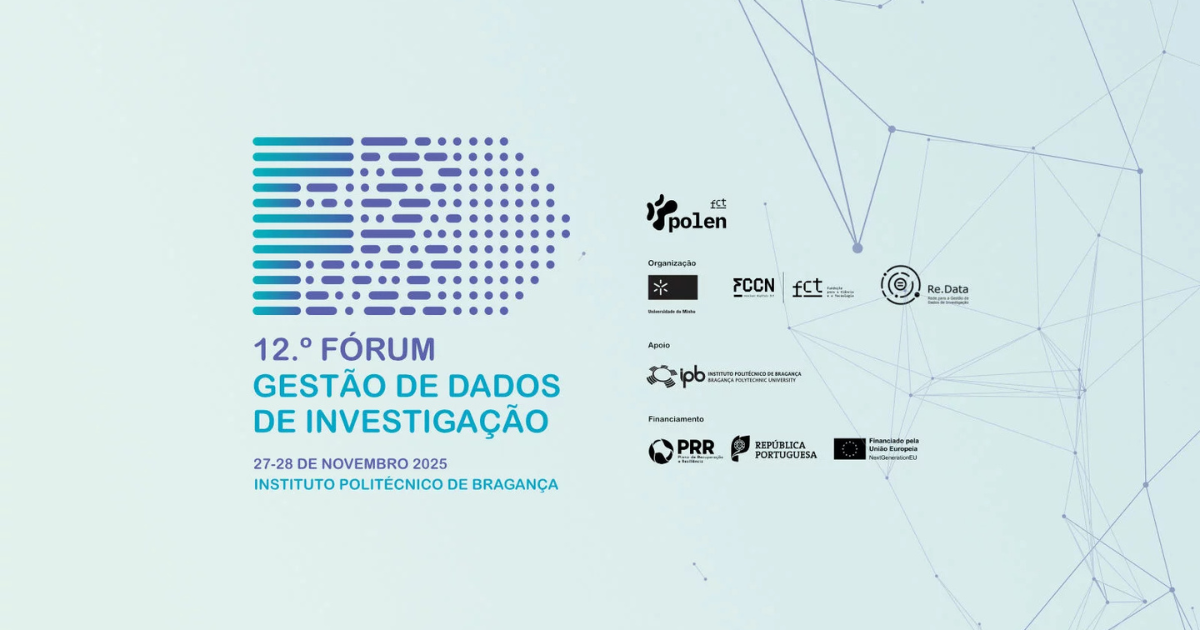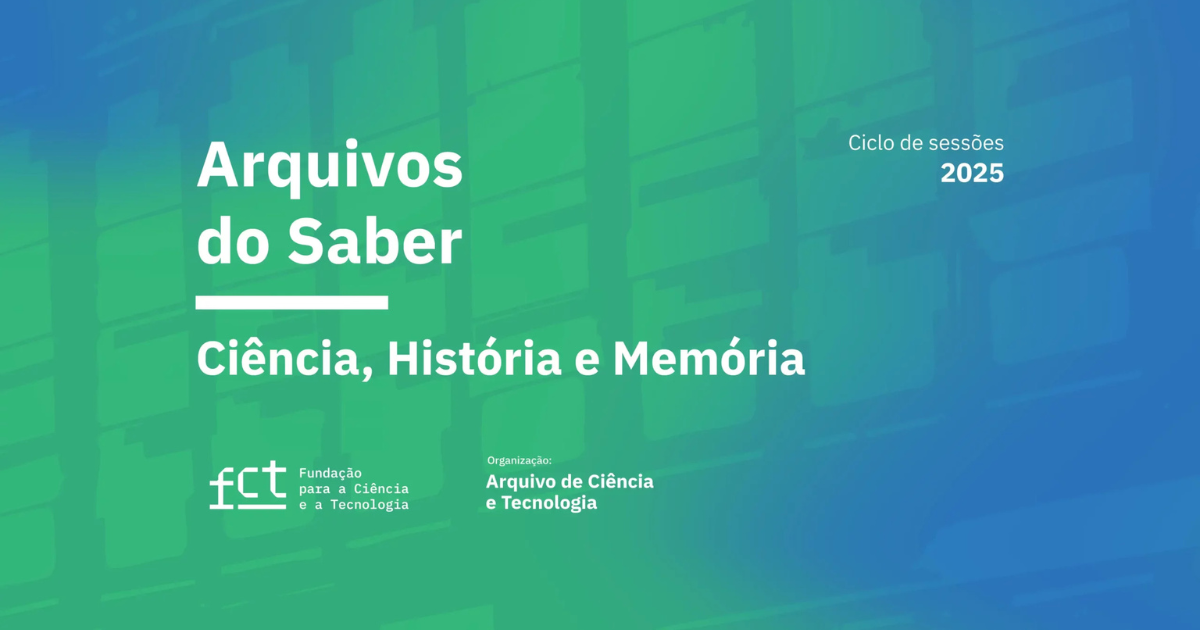What is the concept of Open Science? And how can it solve complex societal problems? The Area Director of the FCCN Unit, João Mendes Moreira, answers these and other questions, assessing the implementation status of policies, structures, and best practices. In the interview, João Mendes Moreira also details some of the main achievements resulting from the efforts made in the area of Open Science, highlighting the various projects and services of the FCCN Unit related to it.
What is Open Science and what is its importance in the current context of scientific research?
There are several definitions of open scienceThe one I usually use, because it is comprehensive and easy to convey, is the following: "Open Science is scientific activity practiced in an open, collaborative, and transparent manner, in all domains of knowledge, from fundamental sciences to social sciences and humanities."
The importance of Open Science in the context of current scientific research has been growing for several reasons. On the one hand, it has the potential to increase the quality, impact, and benefits of science and accelerate the advancement of knowledge, making it more reliable, efficient, and accurate. On the other, it allows science to be more comprehensible to society, better responds to societal challenges, and encourages the development of quality in the scientific evaluation process.
What are some practical applications of these principles? And what direct impact do they have on scientists' daily lives?
The practice of open science implies not only that research results are made available without access restrictions, but also that the research process itself is open, using methods, tools and workflows that facilitate sharing, reuse and collaboration.
In the past, when Information and Communication Technologies (ICT) were non-existent, research was concentrated in scientific publications. ICT has made it possible to deconstruct research results and processes. Today, it is possible to publish not only the results of scientific research but also all the artifacts that gave rise to them, such as laboratory notes, datasets, or software used in data processing.
It's also possible to share this information throughout the research process, not just after it's "completed." This approach makes it possible, among other benefits, to receive comments and suggestions throughout the research process, allow other researchers to replicate the research, and, no less importantly, reuse components developed by others, thus increasing the transparency and efficiency of the process. I often jokingly say that Open Science is LEGO Science.
An undeniable testament to the benefits of research based on the Open Science paradigm was its use to address the societal emergencies caused by the pandemic. Indeed, never in human history has so much knowledge on a subject been produced and shared in such a short space of time. It is worth noting that scientific publishers also participated in this effort by not only providing open access to content on this topic but also implementing mechanisms for fast peer review.
Given this success, the question that arises is: how can we justify not also making research on cancer or cardiovascular diseases freely accessible? Beyond the health field, Open Science and responsible research and innovation will be fundamental to identifying other societal challenges in areas such as food, agriculture, forestry, and water; safe, clean, and efficient energy; smart, green, and integrated transportation; climate action, environment, and resources; and societal security.
The concept has been gaining particular notoriety over the last decade. Do you feel that any important achievements have already been achieved? Which ones?
I believe significant progress has been made. However, the notoriety of open science is not uniform, as it depends on several factors such as the stage of adoption, the dimension under analysis (open access, open data, open software, etc.), the scientific domain, and geography.
If we consider three possible stages: awareness/evangelization, adoption, and consolidation, I can affirm that open science, as a broad concept, is completing the awareness and evangelization phase. This assertion is supported by the recent adoption of UNESCO Recommendation on Open Science which was signed by 193 countries.
In terms of implementation, some aspects are undergoing consolidation, particularly open access to scientific publications, while others, such as research data, are in the implementation phase. In this regard, I would like to mention that the European Commission has now required, within the current Community Support Framework, the provision of data resulting from funded research. This data must comply with the FAIR (Findable, Accessible, Interoperable, Reusable) rules.
There are scientific domains that are at more advanced stages and where open science is already the norm for conducting and communicating science. This is the case, for example, with physics and astronomy.
An Open Science ecosystem requires the creation of various mechanisms and structures. What work has the FCCN Unit been doing in this regard?
The FCCN Unit focuses on two of the most important dimensions of open science: scientific publications and research data. The following figure presents the various activities being developed. In addition to the aforementioned dimensions, the FCCN Unit is working on providing a directory of journals and repositories and has maintained the program since 2014. ptcris.pt which aims to promote interoperability between the various science management systems.
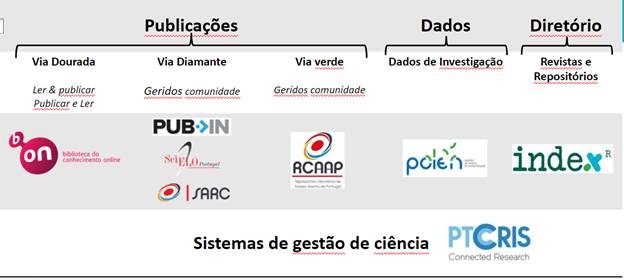
In the field of publications, the FCCN Unit develops three activities: b-on, PubIn and RCAAP.
b-on was launched in 2004 with the goal of promoting access to the world's leading sources of scientific information. Through transformative agreements that will be in effect from 2022 to 2024, authors from b-on institutions will be able to publish open access, with most of b-on's subscribed publishers and under the terms agreed upon with each of them, free of charge.
The PubIn initiative aims to provide infrastructure and services to support national open-access scientific journals. Finally, RCAAP, an acronym for Open Access Scientific Repositories Network, allows national educational and research institutions to maintain a repository of their scientific output.
In the field of research data, the Pólen initiative is scheduled to launch this year. This initiative will provide services for managing research data plans as well as a research data repository.
These infrastructures and services will support the establishment of FCT's open science policies.
What will be the next most relevant steps for the FCCN Unit regarding Open Science?
In general, the next steps/challenges involve changing research and science communication practices. To be successful, this change must consider the dimensions represented in the following pyramid.
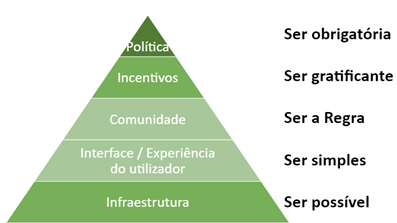
Infrastructure and services are needed, and they must be easy to use. Open Science practices must become the norm in the research community, and to achieve this, it is crucial that this practice be rewarding. In this regard, I would like to mention that a global reform of the evaluation system is underway, which is expected to enhance Open Science practices.
Finally, policies are essential to making Open Science a reality. Thus, in 2022, the Foundation for Science and Technology (FCT) plans to update its open access policy for scientific publications to align with Plan S, as well as implement a research data policy.
An example of this pyramid's instantiation was the shift from in-person to virtual communication practices following the pandemic. Virtual communication was possible because tools existed, were easy to use, became the preferred form of communication, were rewarding because they allowed people to continue working and receiving wages, and were mandatory because the government imposed lockdowns for a significant period.
The FCCN Unit will be responsible for supporting each and every layer of this pyramid. In the infrastructure component, the next steps will be to adjust/expand the service portfolio to support the remaining dimensions of Open Science (e.g., open peer review, continuous publishing, software or protocol repositories, etc.). To this end, political and budgetary support will be essential to advance the adoption and practice of open science in Portugal.
